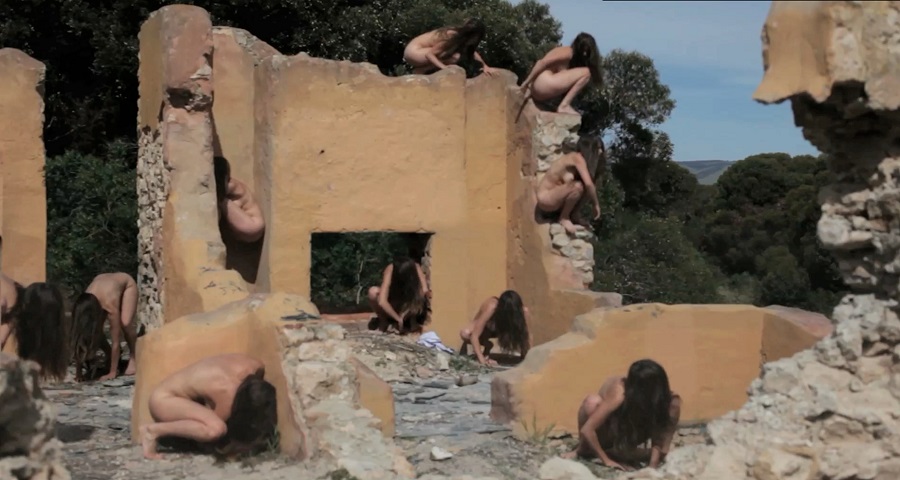Frequently displayed alongside each other, the figures in Byrcroft's videos and the objects and fragments in their assemblages flow across the audience’s field of vision more readily than holding the gaze.
Image: Madison BYCROFT, Omelas (detail), 2012, single channel video, 7:30 min loop
Madison Bycroft
Madison Bycroft evinces an optimistic and unified approach to art and life. A recent graduate of the University of South Australia, they pursue a philosophical and a personal liminality through their video installation and sculptural practice. Largely inspired by Deleuze and Guattari’s influential notion of ‘becoming–animal’, they are seeking to live in more mystical and empathetic ways in defiance of what they have described as ‘categorical and colonial’ thinking.
From the beginning Bycroft has used whatever is at hand. In Five Ways to Peel a Potato (2011), they respond to Joseph Beuys’ exhortation that, ‘even the act of peeling a potato can be a work of art if it is a conscious act.’ The serendipitous nature of the experiments and interventions that they conduct also brings to mind the ideal of the ‘happening’, the term coined by the venerable Allan Kaprow.
Their videos capture these ‘experiments’ as playful unfolding encounters with the ‘self’. Whether slithering naked across the floor towards a tuba or mopping the streets of Beijing, there is a vitalism at work, opening the self to unseen forces. This move away from individual subjectivity is also evident in the even treatment of their videos and sculptures. Frequently displayed alongside each other, the figures in Byrcroft's videos and the objects and fragments in their assemblages flow across the audience’s field of vision more readily than holding the gaze.
In their most recent video work, Becoming Still (2013), Bycroft muses on the push and pull of planetary relations. They are seen cradling a large rock on the ocean floor until breathlessness returns them to the surface of the water. For Bycroft, these exertions in the watery reaches of the earth have some bearing on their aspirations for reconciliation. Here, through the intimacy with the rock and the necessity of their re–entry for air they remind us that these connections cannot be forced and that they entail navigating a multiplicity of material and symbolic positions.
Text by Jasmin Stephens, Curator and Writer, Sydney.
2014 Visiting Student, Masters of Fine Art at the Piet Zwart Institute, Rotterdam
2013 Anne & Gordon Samstag International Visual Arts Scholarship
2012 Bachelor of Visual Arts Honours (First Class), UniSA City West Campus
2009–2011 Bachelor of Visual Arts with distinction, Sculpture, UniSA City West Campus
2006–2008 Bachelor of Visual Arts, Coker College, Hartsville, South Carolina, USA
Artist's website: madisonbycroft.net

